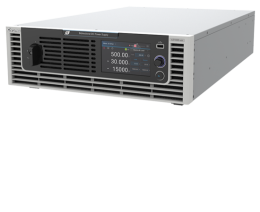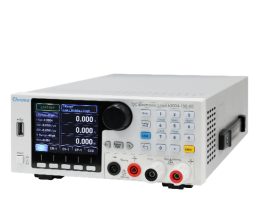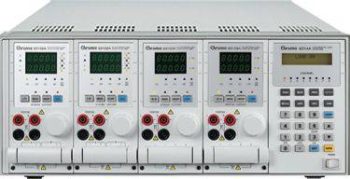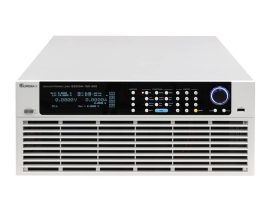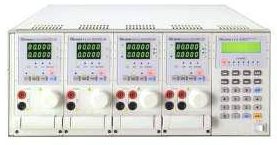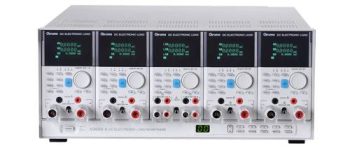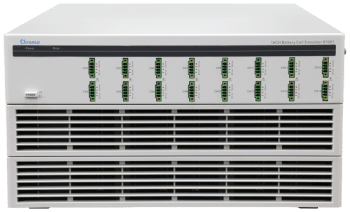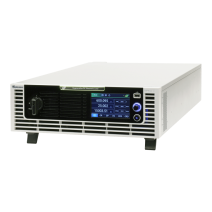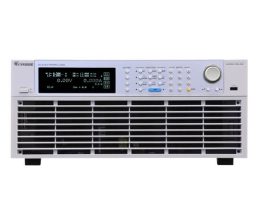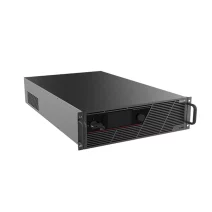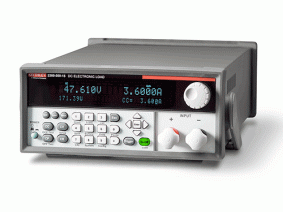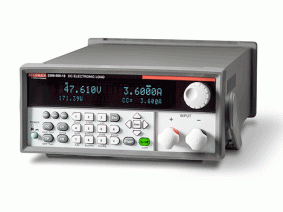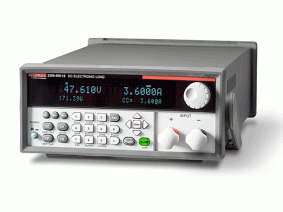Power Electronics Test Systems /
Programmable DC Electronic Load
A programmable DC electronic load is an instrument designed to simulate a variety of load conditions for testing power sources and power electronic devices. It is used to test the performance of batteries, fuel cells, solar cells, and other power sources. The programmable DC electronic load can also be used to test the efficiency of DC power supplies, DC-DC converters, and other power electronic devices.
The electronic load can be programmed to simulate different load conditions, including constant current, constant voltage, constant power, and constant resistance. It can also simulate dynamic loads, such as intermittent loads and pulsed loads. The load is typically controlled through a computer interface, allowing for precise control of load conditions.
One of the key advantages of a programmable DC electronic load is its ability to provide a controlled and repeatable load to the power source or power electronic device being tested. This allows for accurate testing and characterization of the device under a variety of load conditions, which is critical for optimizing its performance.
In addition, electronic loads typically have built-in protection features, such as over-voltage, over-current, and over-temperature protection. This helps to prevent damage to the power source or power electronic device being tested, as well as to the electronic load itself.
A programmable DC electronic load is an instrument designed to simulate a variety of load conditions for testing power sources and power electronic devices. It is used to test the…
...performance of batteries, fuel cells, solar cells, and other power sources. The programmable DC electronic load can also be used to test the efficiency of DC power supplies, DC-DC converters, and other power electronic devices.
The electronic load can be programmed to simulate different load conditions, including constant current, constant voltage, constant power, and constant resistance. It can also simulate dynamic loads, such as intermittent loads and pulsed loads. The load is typically controlled through a computer interface, allowing for precise control of load conditions.
One of the key advantages of a programmable DC electronic load is its ability to provide a controlled and repeatable load to the power source or power electronic device being tested. This allows for accurate testing and characterization of the device under a variety of load conditions, which is critical for optimizing its performance.
In addition, electronic loads typically have built-in protection features, such as over-voltage, over-current, and over-temperature protection. This helps to prevent damage to the power source or power electronic device being tested, as well as to the electronic load itself.
-
Chroma 62000D programmable bidirectional DC power supplies provide both power source and load characteristics. These two quadrant power supplies...FIND OUT MORE
-
The 63000 series programmable DC electronic loads are reliable, precision instruments primarily designed to test switching power supplies, A/D...FIND OUT MORE
-
The Chroma 6310A Series Programmable DC Electronic Load is ideal for the test and evaluation of multi-output AC/DC power supplies, DC/DC converters,...FIND OUT MORE
-
Chroma has created the industries’ first LED operating mode for simulating LED loading with our 63110A. By setting the LED driver's output voltage,...FIND OUT MORE
-
The Chroma Electronic Loads 63200 series are designed to test DC power sources, power electronic devices, automotive battery and components testing....FIND OUT MORE
-
Chroma’s 63200A series high power electronic loads with built in digital signal microprocessors (200MHz) provide optimal speed and control...FIND OUT MORE
-
The Chroma Model 6330A series high speed DC electronic load improves CPU clock, baud rate, parser and added synchronic parallel functions for fast...FIND OUT MORE
-
Chroma’s 63600 Series DC Electronic Loads are designed for testing multi-output AC/DC power supplies, DC/DC converters, chargers, batteries,...FIND OUT MORE
-
Chroma’s 63800 Series AC&DC Electronic Loads are design for testing uninterruptible power supplies(UPS), Off-Grid Inverters, AC sources and...FIND OUT MORE
-
The Chroma 87001 Battery Cell Simulator is a high precision, programmable and bidirectional DC power source with both voltage source and current...FIND OUT MORE
-
The Chroma 63700 Regenerative DC Electronic Load offer a versatile solution for simulating a wide range of load characteristics while efficiently...FIND OUT MORE
-
Chroma’s 63200E series high power electronic loads provide optimal speed and control performance and have ultra-high density power (6kW@4U). The...FIND OUT MORE
-
KDL Series Energy Recycling DC Electronic Load is a power conversion device based on power frequency isolation, and IGBT two-stage conversion...FIND OUT MORE
-
The S7000H is a high-precision DC power system that supports dual mode-source & load. It has the capability for dual quadrant energy flow and as...FIND OUT MORE
-
Series 2380 programmable DC electronic loads can sink a wide range of voltages and currents. The 250W Model 2380-120-60 can accept up to 120V or 60A....FIND OUT MORE
-
Series 2380 programmable DC electronic loads can sink a wide range of voltages and currents. The 200W Model 2380-500-15 can accept up to 500V or 15A....FIND OUT MORE
-
Series 2380 programmable DC electronic loads can sink a wide range of voltages and currents. The 750W Model 2380- 500 30 can accept up to 500V or...FIND OUT MORE

